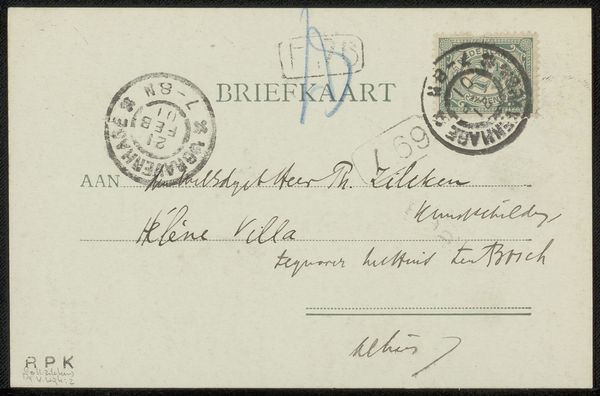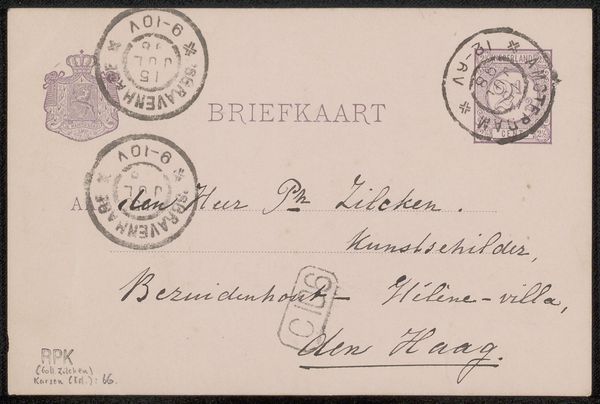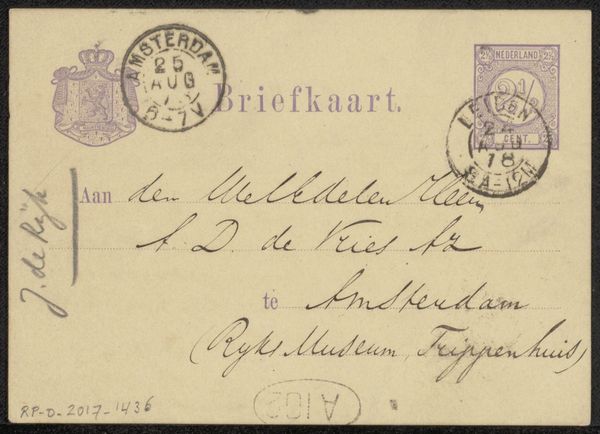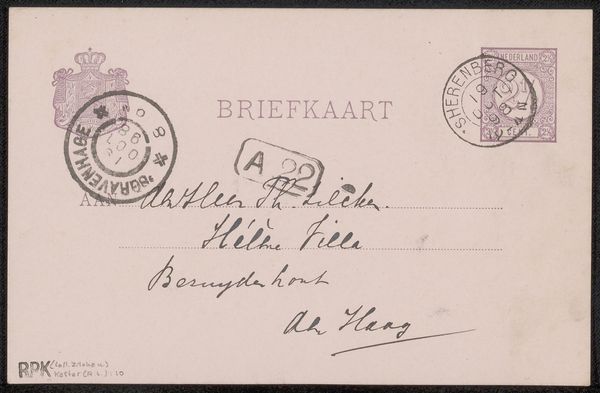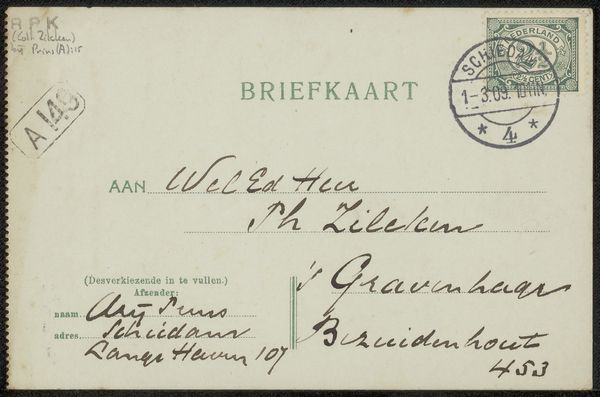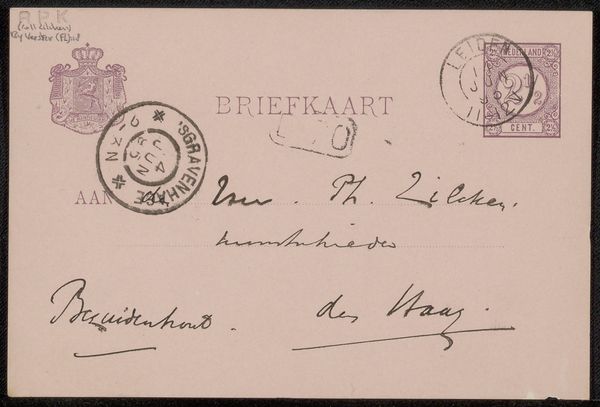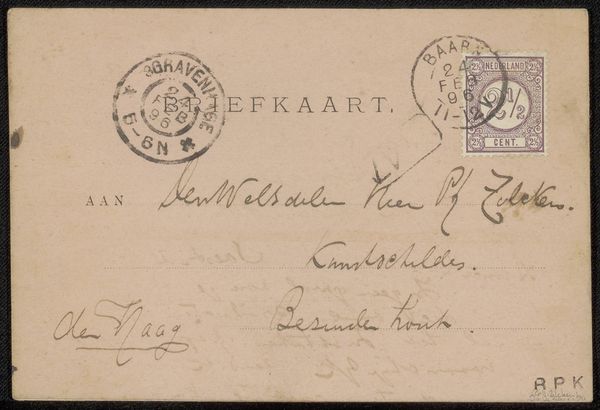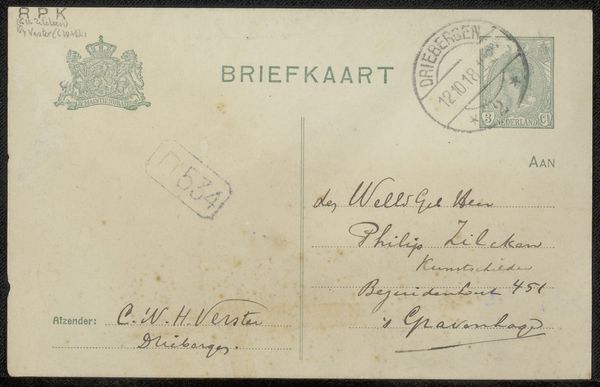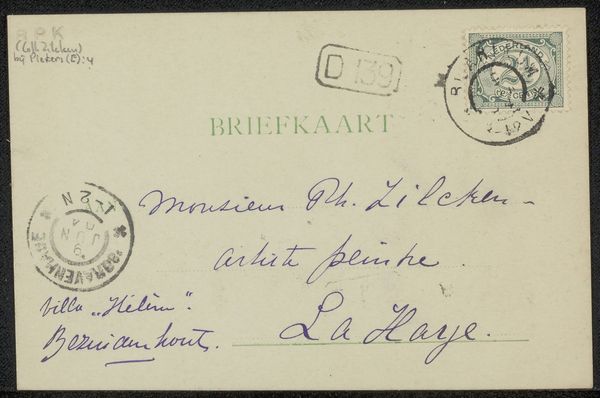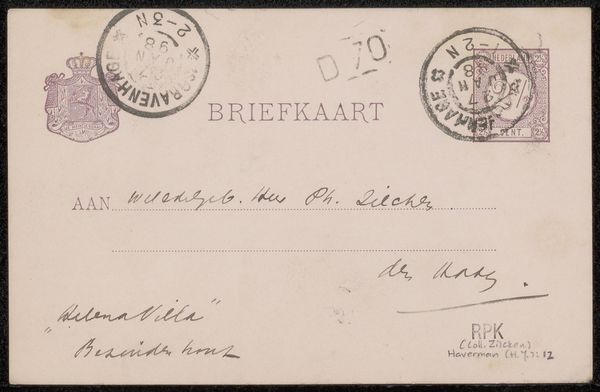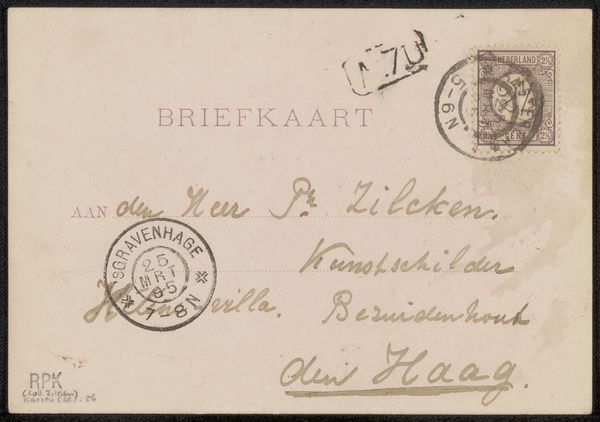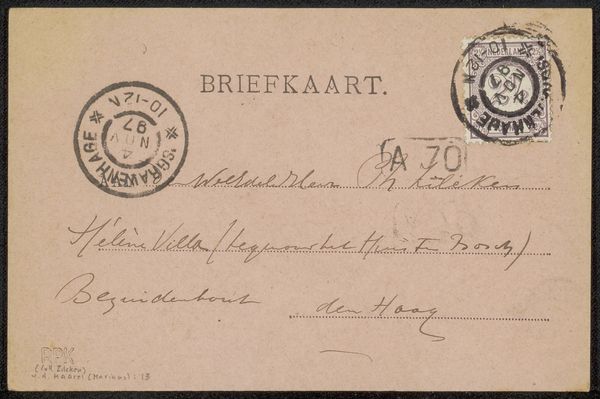
drawing, print, paper, ink
#
drawing
# print
#
pen illustration
#
pen sketch
#
old engraving style
#
hand drawn type
#
paper
#
personal sketchbook
#
ink
#
ink drawing experimentation
#
pen-ink sketch
#
pen work
#
sketchbook drawing
#
sketchbook art
#
calligraphy
Copyright: Rijks Museum: Open Domain
Editor: This is "Briefkaart aan Philip Zilcken," a postcard, likely from sometime between 1902 and 1919, created by Albrecht Felix Reicher, using drawing and printmaking with ink on paper. It seems simple at first glance, almost like a found object. How do you interpret the everyday nature of this piece as art? Curator: Indeed. The deceptively simple facade of a postcard conceals a network of layered meanings. A seemingly mundane object becomes a powerful conveyor of cultural memory. Think about the postal stamp, for instance. What does it evoke for you? Editor: Well, the stamp suggests a sense of place, a specific time...like a little piece of a lost world. It makes me think about connection and communication in a different era. Curator: Precisely. The stamp acts as a symbol of national identity, commerce, and even imperial reach. But consider also the handwritten script. It's more than just a message, it's an echo of the sender's personality, their education, their social standing. It communicates directly in a way machine print cannot. Can you feel a personal presence? Editor: Definitely, it's so intimate! All of the different fonts also. And what about the address and profession "Kunstschilder" meaning "Painter". It shows so many sides of Philip Zilcken, not just a name. It’s a beautiful kind of cultural record, I think. Curator: You've grasped a key insight. This humble postcard transforms into a multifaceted artifact, resonating with cultural echoes and whispered narratives of individual experience. Thank you! Editor: Thank you! I hadn’t thought about all the ways even a small piece of paper could connect to larger ideas about history and identity.
Comments
No comments
Be the first to comment and join the conversation on the ultimate creative platform.
